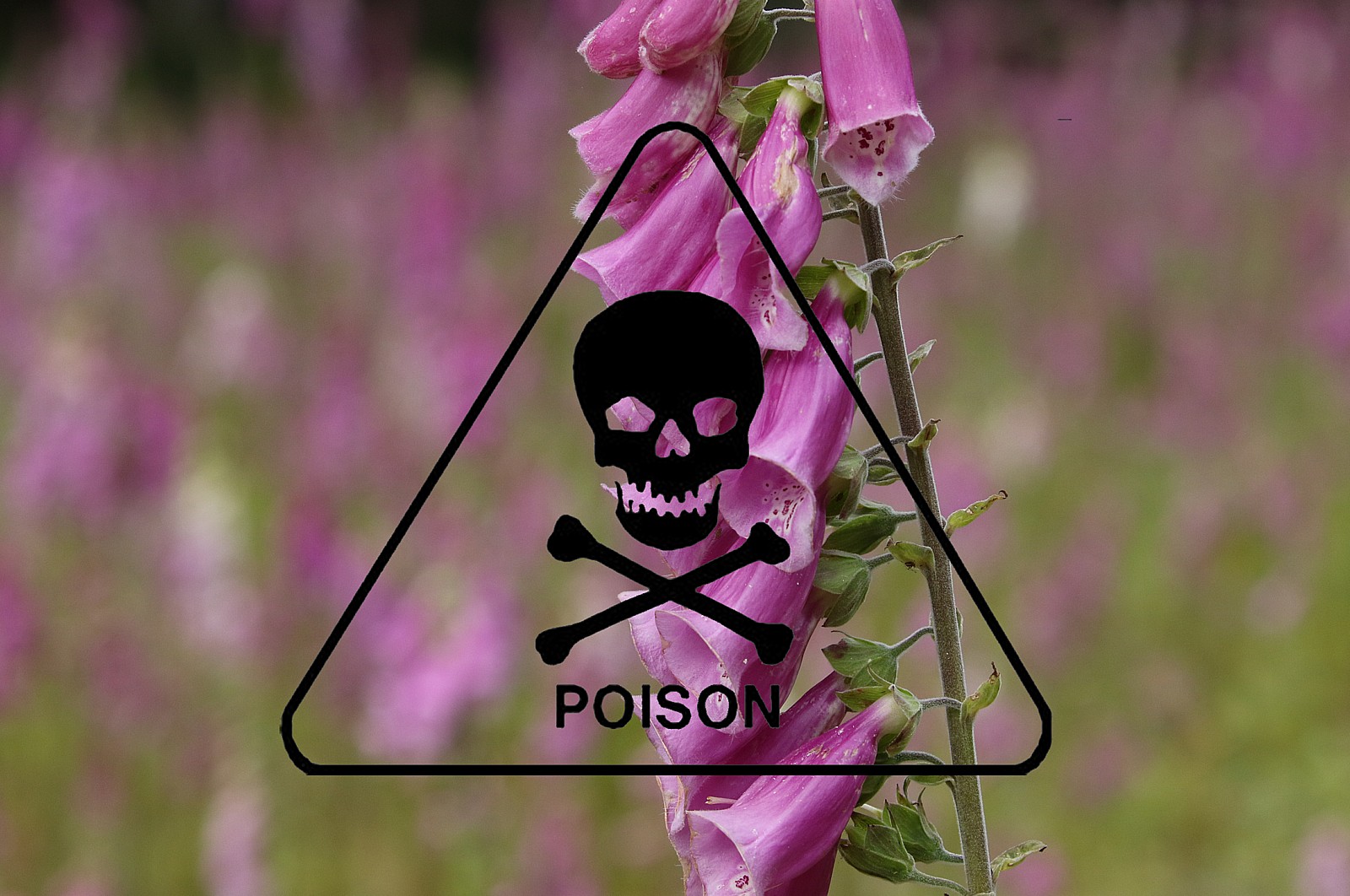be careful out there
Foxglove is poisonous. Foxglove leaves, flowers, and seeds all contain digitoxin, a powerful poison which can make you very sick or kill you in an unpleasant way. Don't eat it! It can also affect you through skin contact, or through breathing the smoke if you burn it.
It is not difficult to deal with safely, but you need to take appropriate care.
- Don't get it near your mouth. Watch out for your stock and your children. Most grazing animals avoid foxglove, but don't rely on that.
- Keep it off your skin. Wear gloves. Long sleeves and long pants are a good idea.
- Don't let it touch your eyes.
- Do not burn it. The smoke is poisonous and can make you very sick. Let it rot. Nature will break the poisons down if you give it enough time. (How long does it take? I don't know.)
- Take great care brushcutting foxglove. By its nature, bushcutting sprays parts of the plant everywhere: into the air, on your clothes, on your facemask. Worse, the cutter head slices up the plant and releases the poisonous sap so that it can get on your skin and form droplets in the air. On the Tasmanian Foxglove Facebook page, Allison reports "My partner spent three hours on Wednesday brushcutting foxgloves wearing full length clothing, gloves, and a full face visor. By Thursday morning he was extremely unwell and was still unwell with foxglove poisoning symptoms several days later. What should be added to his protective wear is a P2 face mask under his visor". Allison also recommends a shower immediately after brushcutting foxglove, washing all the clothes you wore while doing it; and perhaps limiting your daily at-risk time. These all strike me as sensible precautions. Allison's experience is not the only one I've heard about.
- Be aware of snakes, especially late in the season when the climate warms up.
- Follow the manufacturer-recommended practices for chemical safety. Most herbicides are very mild compared with things like solvents, fungicides and pesticides, but they still require proper handling. Be particularly careful when you are handling undiluted chemicals, for example making up a tank mix. Wear proper gloves and use eye protection. At a typical mix ratio of 50ml per 10 litres, the neat herbicide in the bottle is 200 times stronger than the ready-to-spray mix in the tank.
- As always, the soft, wet parts of your body are the most vulnerable to contamination (be that by chemicals or by foxglove). Mouth, eyes, nose any place with soft, thin skin is easily penetrated. This is why it is so important to wear eye protection and where necessary face protection (brushcutting is the big one here), and to avoid touching your eyes, mouth and face while you are working.
Different people's vulnerability to foxglove varies a lot. Some people are easily affected by quite limited exposure, others regularly seem to get off scott-free. You must decide what measures are sensible, but gloves and eye protection are the essential minimum if you are spraying or hand-weeding, and brushcutting requires extra care.
